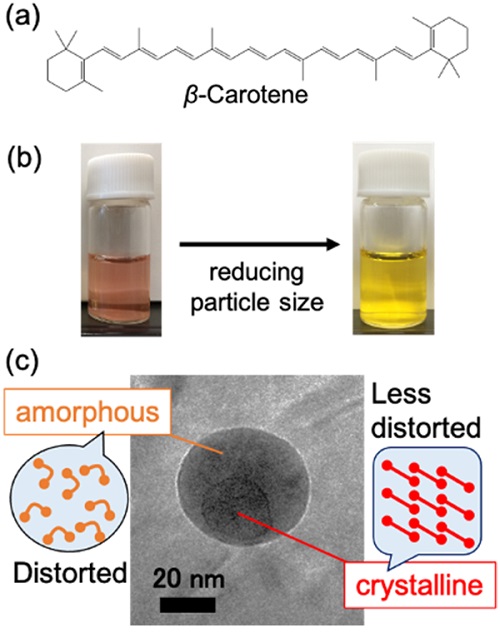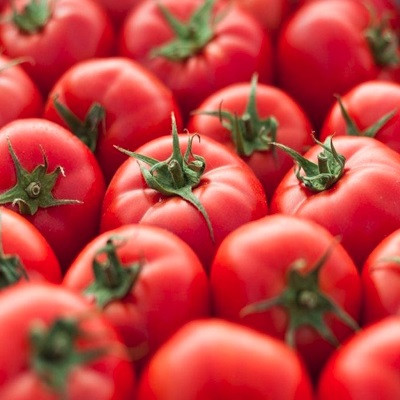The researchers expect the findings to apply to the development of vivid coloring technology that brings out the intrinsic color tone of natural materials and new nanomaterials whose physical properties can be regulated by molecular distortion.
The study was published in The Journal of Physical Chemistry C on January 21, 2022.
Certain vegetables and fruits produce carotenoids from chlorophyll during their ripening process. Water-insoluble carotenoids are accumulated as fine particles in cells and give them vivid yellow, orange, or reddish colors. The eye-catching colors attract predators and other species and help disperse their seeds.
Unlike typical organic pigments, which have a rigid, aromatic-based molecular structure, carotenoids have flexible molecular structures derived from polyene skeletons. This means carotenoid molecules are easily distorted in response to stress and change their properties.

Carotenoids nanoparticles' color and structure. (a) The chemical structure of β-carotene (b) β-carotene particles dispersion that change color as particle size reduce (c) β-carotene nanoparticle taken by a cryo-transmission electron microscope.
The team hypothesized that carotenoids' flexible molecular structure is responsible for their unique color and studied the structural and optical characteristics of carotenoid-based nanoparticles. They found carotenoids' molecular distortion affected the optical properties of the nanoparticles.
Using transmission electron microscopy, electron diffraction analyses, and Raman spectroscopy, the team established that all the nanoparticles comprised two domains: a crystalline domain consisting of undistorted molecules and an amorphous domain consisting of distorted molecules.
Furthermore, they discovered a correlation between the absorption spectra and the extent of carotenoids distortion - labelled effective π-conjugation lengths. This led to the conclusion that molecular distortion strongly affects optical properties.
Molecular distortion is a new concept that has not been taken into account in conventional studies of organic nanoparticles. In the future, the research team plans to develop coloring technology that draws out the intrinsic colors of natural materials, as well as novel functional nanomaterials based on flexible molecules.
Read the original article on Tohoku University.
